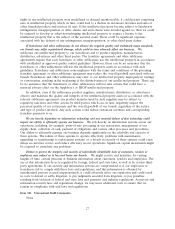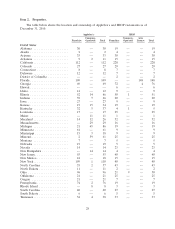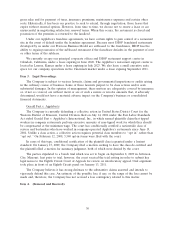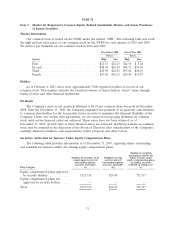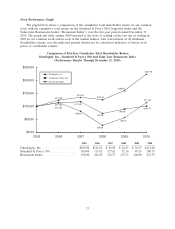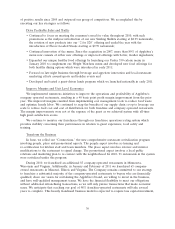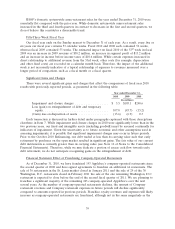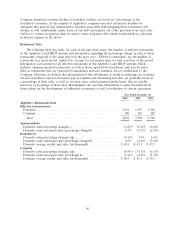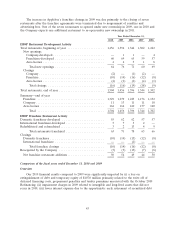IHOP 2010 Annual Report Download - page 53
Download and view the complete annual report
Please find page 53 of the 2010 IHOP annual report below. You can navigate through the pages in the report by either clicking on the pages listed below, or by using the keyword search tool below to find specific information within the annual report.
improve margins and reduce the volatility of cash flow performance over time, while also providing
cash proceeds from the franchising of the restaurants for the retirement of debt.
In a challenging economic environment and a highly competitive casual dining category, there can
be no assurance that the strategies described above, when implemented, will achieve the intended
results, including the franchising of the remaining Applebee’s domestic company-operated restaurants,
within the time frames described above.
IHOP’s Key Strategies
We pursue growth through a three-part strategic framework: (1) energize the IHOP brand;
(2) improve operations performance; and (3) maximize franchise development.
Energize the IHOP Brand
We seek to energize our brand by continuing our ‘‘Come Hungry. Leave Happy.’’ advertising
campaign. This message has successfully resonated with our guests for almost eight years. In 2003, we
also initiated the strategy of limited time offers on promotional products. Since that time, we have
enhanced our execution of this promotional product approach by improving the appeal and the
franchisees execution of these promotions. In addition, we seek to enhance our media strategies to
emphasize national advertising on broadcast, cable and syndicated television and strengthen our
product promotion process. Over the last three years, we have shifted the allocation of our media
spending towards national advertising. Due to this reallocation from local to national advertising, in
2010 we were able to provide continuous media support for all national initiatives, such as limited time
offers, and secondary messages, such as IHOP for Dinner, Gift Cards and Kids Eat Free.
In 2010, we launched the next phase of our remodel program to capture energy and innovation
necessary to keep the IHOP brand relevant, dynamic and enticing. We also expanded our gift card
program by increasing our third-party retailer base to market our gift cards in 2010 as well as now offer
our gift cards through a national scrip program allowing an additional presence at over 15,000
non-profit organizations across the United States. In 2010 we successfully launched an e-club enabling
both national and local offers to be sent electronically to our guests that sign up for the program.
Improve Operations Performance
We intend to continue to improve the operations of the restaurants. During 2003, we established
an IHOP franchisee grading system to evaluate the operational standards of each of our restaurant
units. This franchisee grading system is a comprehensive scorecard that covers mystery shop scores,
operational assessment scores and health department ratings, among other things. During 2010, IHOP
moved to the next level of guest feedback from the current process of mystery shop to a ‘‘Voice of the
Guest’’ program which provides real time guest feedback to the operators and the brand. In 2010, 91%
of all franchisees received grades of ‘‘A’’ or ‘‘B’’ for their restaurants. In addition, we intend to continue
focusing on making exceptional service a priority for franchisees by providing tools for improved
restaurant execution, while highlighting our motto ‘‘service as good as our pancakes.’’ Substantially all
IHOP restaurants are using pollable point-of-sale systems to capture and report a broad range of sales
and product mix data. This information is used by management to, among other things, to gauge guest
acceptance of menu items and the success of promotions and limited time offers.
Maximize Franchise Development
Under the Current Business Model, IHOP seeks to maximize franchise development by
emphasizing the recruitment of franchise developers within and outside the current system in order to
grow its revenues. This strategy has proven very successful as we have developed approximately
416 restaurants since the inception of the Current Business Model and we have a pipeline of 353
37


